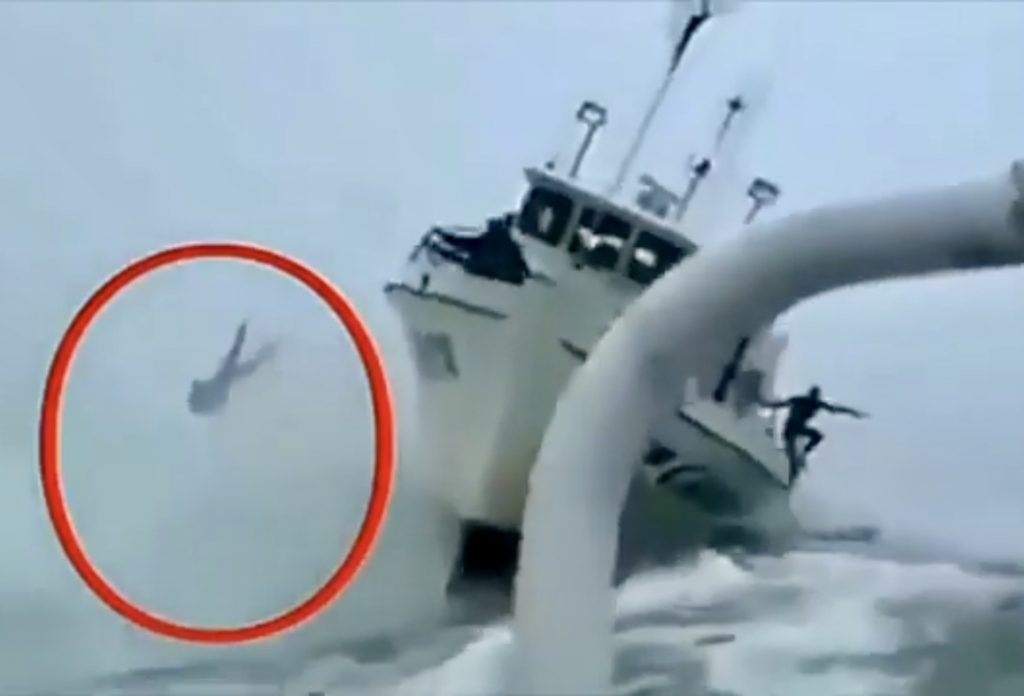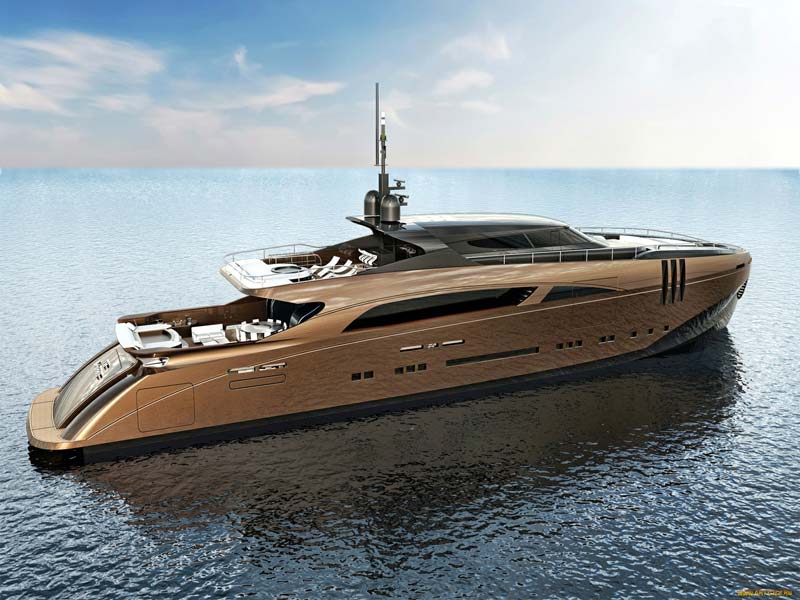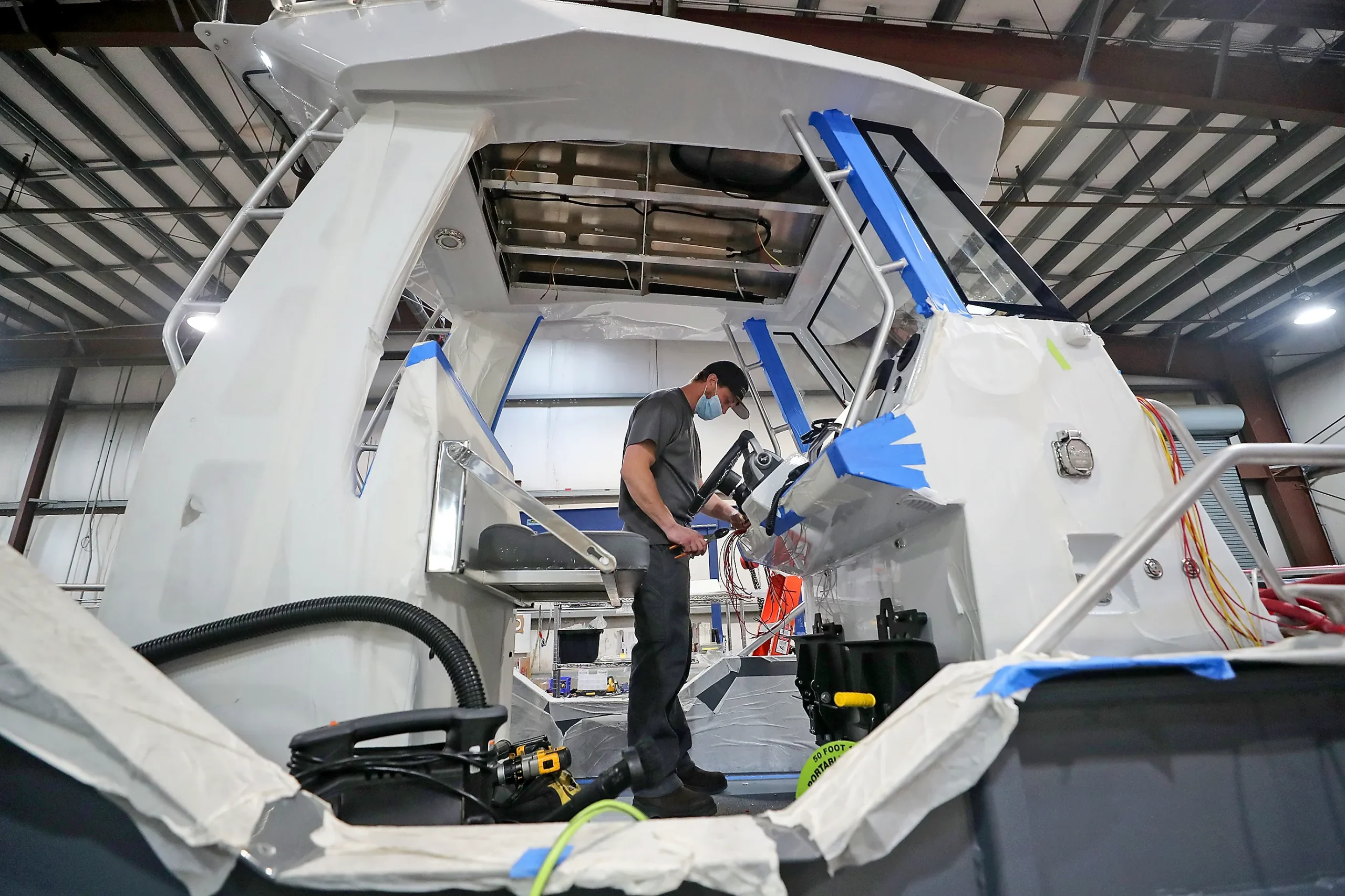What Is Most Likely to Cause Someone to Fall Overboard? Key Risk Factors Explained
Falling overboard is a significant risk for anyone on a boat.
The most common cause of someone falling overboard is simply standing up. Balancing on a boat is different from balancing on solid ground, and many people aren’t accustomed to maintaining their balance on a moving boat.

This becomes even more challenging with the boat's motion and possibly wet or uneven floors.
Carelessness and inattention are also major factors. People may not realize how easy it is to lose balance, especially if they are walking around or moving too quickly.
Experienced boaters know to avoid excessive speed and to be vigilant of their surroundings for safety.
Operator inexperience, excessive speed, and alcohol use can also contribute to falls. The boat's captain has a significant responsibility to ensure a safe environment for everyone on board.

Adhering to safety guidelines and wearing personal flotation devices (PFDs) are crucial preventive measures against falling overboard.
Key Takeaways
- Standing up is the most common cause of falling overboard.
- Carelessness and inattention increase the risk of falling.
- Operator experience and safety measures are crucial for preventing falls.
Understanding the Risks of Falling Overboard
Falling overboard can be caused by various factors, including a person's balance, the weather, and the intake of alcohol or other substances. Learning about these risks can help prevent accidents and injuries on the water.
Factors Affecting Balance on Board
Balance is crucial when on a boat. Standing up can significantly compromise balance because boats are not as stable as solid ground.
The center of gravity shifts with each person’s movement, making it easier to fall over.
Boats are prone to sudden shifts, which can catch someone off guard. Poor footing due to wet or slippery surfaces adds to the risk.
Wearing proper footwear can reduce slips and help maintain balance on board.
Impact of Weather on Safety
Weather conditions play a significant role in onboard safety.
Bad weather, including high winds and rough waves, can cause instability. Smaller vessels are particularly susceptible to these conditions.
High winds and sudden waves can make it difficult to stay steady, increasing the chances of falling overboard.
It's important to monitor weather forecasts before heading out and avoid boating in severe conditions to reduce risks.
Role of Alcohol and Substances
Alcohol and other substances impair a person's ability to balance and react quickly.
Consuming alcohol reduces coordination and judgment, making it more likely for someone to fall overboard.
Drinking on a boat can also lead to more severe injuries or fatalities if someone falls into the water.
It's essential to limit or avoid alcohol consumption while boating to maintain safety and reduce the risk of accidents.
Essential Safety Gear to Prevent Overboard Incidents
Using appropriate safety gear is crucial in preventing people from falling overboard and ensuring they remain safe if they do. Some of the most important safety items include life jackets and personal flotation devices (PFDs), as well as safety harnesses and lines.
Life Jackets and Personal Flotation Devices
Life jackets and PFDs are essential for anyone on a boat. They help keep a person afloat in the water, making it easier to be rescued.
There are many types of life jackets designed for different activities and water conditions. Boaters should choose one that fits well and is suited for their specific needs.
A well-fitted life jacket should be snug yet comfortable. It should not ride up over the head when in the water.
PFDs should always be within reach and in good condition, free from rips or tears. Each PFD must be Coast Guard-approved to ensure it meets safety standards.
Life jackets should be worn at all times when the boat is moving. It's not enough to have them on board; they need to be worn to be effective.
This is especially true for children and non-swimmers, who are more vulnerable in emergency situations.
Safety Harnesses and Lines
Safety harnesses and lines are also key in preventing falls overboard, particularly on larger boats and during rough conditions. These are designed to keep individuals attached to the boat, reducing the chance of falling into the water.
A safety harness is worn around the torso and is connected to the boat using a line.
This line should be strong enough to hold the person's weight and long enough to allow movement on the boat, but short enough to keep them from falling overboard.
It is important to regularly check for wear and tear on both the harness and the lines. Any signs of damage should be addressed immediately to ensure the gear remains effective.
Proper use of safety harnesses and lines can make a significant difference in preventing overboard incidents.
Boat Handling and Maneuvering
Proper boat handling and maneuvering is vital to prevent accidents and ensure everyone's safety on board. It requires attention to speed, control, and the ability to handle waves and wakes effectively.
Speed and Movement Control
Maintaining the right speed and controlling the boat's movements are crucial.
Excessive speed increases the risk of falling overboard, especially when making a turn or encountering waves.
Boaters should avoid sharp turns at high speeds to keep balance and minimize the risk of being thrown overboard.
Slowing down when the boat is in rough water or busy areas is important.
Small boats, in particular, can be more affected by sudden motions. Proper use of the throttle helps in managing the boat's speed and ensures smoother navigation.
Constantly monitor the boat's motion and make gradual adjustments.
Abrupt changes in speed or direction can catch passengers off guard, leading to potential falls. Using the boat's engines and steering mechanisms smoothly contributes greatly to safe maneuvering.
Navigating Waves and Boat Wakes
When navigating waves and boat wakes, anticipating their impact on the boat is essential.
Positioning the boat to hit waves at an angle rather than head-on reduces the jarring motion that can cause passengers to lose balance and fall.
Smaller boats are more vulnerable to swamping and falling overboard due to waves.
It's vital to adjust the boat's speed in response to waves and wakes. Slowing down can help maintain control and reduce the boat's impact.
Recognize the difference between handling your boat in calm versus turbulent waters.
Preparing the boat and ensuring everyone is seated securely during rough conditions is key.
Boaters must be aware of their surroundings to avoid unnecessary roughness caused by other vessels' wakes.
Boating Best Practices and Onboard Behaviors
To stay safe on a boat, it's essential to know and follow specific behaviors and practices. Here's important advice on moving safely on deck and managing weight to prevent accidents.
Standing and Moving Safely on Deck
When standing or moving on a boat's deck, balance is crucial.
Always maintain three points of contact—either two hands and one foot or two feet and one hand. This helps stabilize you, especially in rough waters.
Avoid sudden movements and be mindful of wet surfaces, which can be slippery.
The use of non-slip mats can improve traction.
Whenever possible, hold onto the boat’s railings or gunwale to better support your balance.
Seating arrangements also matter.
Sit down when the boat is moving quickly or in crowded waters to avoid falling.
If standing is necessary, do so near the center or lower parts of the boat for more stability.
Weight Distribution and Overloading
Correct weight distribution is vital for boat safety.
Always evenly spread out the weight of passengers and gear to keep the boat balanced.
Overloading the boat can lead to instability, making it prone to capsizing or swamping.
Check your boat's capacity limit before heading out.
Adhering to this limit prevents overloading and ensures a safer trip.
Keep heavier items low and centered to maintain balance. Avoid placing heavy objects on the boat's gunwales, as this can cause tipping.
Using boat safety equipment, such as life jackets and engine cut-off switches, also enhances overall safety.
Ensuring that passengers are seated properly and not moving around unnecessarily helps maintain stable weight distribution.
Emergency Response and Rescue Techniques
When someone falls overboard, quick and efficient action is crucial. Knowing the correct man overboard procedures and post-rescue first aid can save lives and prevent further harm.
Man Overboard Procedures
The first step when someone falls overboard is to shout "Man Overboard!" to alert everyone on the boat.
Immediately throw a flotation device, such as a life ring, towards the person in the water.
Turn the boat around carefully and approach the victim from downwind or into the current to avoid drifting away.
Designate a crew member to keep constant visual contact with the person overboard.
Use the boat's assistive devices like a boarding ladder or a rescue sling to pull the person back onboard.
If the boat lacks such devices, bring the person over the stern to maintain boat stability. Ensure these actions are performed swiftly to minimize the risk of drowning.
Post-Rescue First Aid
Once the person is back on the boat, begin immediate first aid.
Check for breathing and pulse.
If the person is not breathing, start CPR.
Treat for shock by keeping the person warm and comfortable. Ensure they lie flat and elevate their feet unless there are injuries that require other positions.
Seek immediate medical attention, especially if the person has been in cold water or is showing symptoms of hypothermia. The U.S. Coast Guard recommends calling for emergency medical help even after successful rescues as complications like shock can arise. Always follow up with professional healthcare providers to ensure the rescued person receives appropriate care.
Boating Education and Regulation Compliance
Ensuring safety on the water involves understanding both the risks and the regulations that can help minimize those risks. Boaters need to be knowledgeable about guidelines set by the U.S. Coast Guard and adhere to these regulations to prevent accidents.
Understanding Coast Guard Guidelines
The U.S. Coast Guard sets specific guidelines to promote boating safety and prevent accidents.
Boaters must be aware of rules such as always wearing life jackets and attaching the engine cut-off switch.
The Coast Guard also emphasizes the importance of using a VHF radio for emergency communication.
Maintaining proper seating is critical. No one should sit on the gunwale, bow, or seat backs while the boat is moving. These areas are dangerous and can increase the risk of falling overboard.
Regular boating education courses, such as those offered by Boat Ed, teach these guidelines and proper safety practices.
These courses cover how to prevent and react to emergencies like capsizing or swamping.
Additionally, boaters should be familiar with their vessel's operation and maintenance. Regular checks for leaks or mechanical issues can prevent emergencies.
Keeping a vigilant lookout and ensuring all passengers understand safety procedures also aids in compliance and reduces the chance of accidents.
Frequently Asked Questions
Falling overboard incidents often result from specific behaviors, adverse weather conditions, and equipment failures. Understanding these elements can significantly enhance safety.
How can boater behavior contribute to overboard incidents?
Boater behavior plays a critical role. Standing up suddenly, not holding onto rails, or moving carelessly on the boat can cause falls. Alcohol consumption also impairs judgment and balance, increasing the risk.
What safety precautions can reduce the risk of falling overboard?
Wearing personal flotation devices (PFDs) and attaching engine cut-off switch lanyards to your wrist, clothes, or PFD can prevent overboard incidents. Ensuring all passengers are seated while the boat is moving is key.
Which actions during severe weather increase the risk of falling overboard?
In severe weather, actions such as walking on the deck without holding onto something, standing up, or leaning over the side can be dangerous. The boat's motion becomes more erratic, making falls more likely.
What are common mistakes that lead to overboard accidents?
Common mistakes include carelessness like standing up while the boat is moving, not using handrails, and inattention. Operating the boat at high speeds without proper training is also risky.
How does boat stability affect the likelihood of passengers falling over?
Boat stability greatly affects passenger safety. Smaller boats like speedboats and sailboats are more prone to instability, making it easier for passengers to lose their balance, especially when the boat moves quickly.
In what ways can equipment failure lead to someone falling off a boat?
Equipment failure, such as malfunctioning railings or handholds, can lead to falls. Engine problems that cause abrupt stops or sudden movements may also throw passengers off balance, increasing the risk of falling overboard.
Charlie is Editor-in-Chief of Sea Magazine







